How to Buy a Rug Online (That You’ll Actually Love Once It Arrives)
I almost exclusively buy rugs online. When it comes to selection, price, and (usually!) free delivery, you just can’t beat the convenience of perusing countless rugs right from the couch. But buying rugs online can also be a big ol’ gamble. Because no matter how much research you do or how many pictures you look at, you’ll never really be sure of what you’re getting until it arrives on your doorstep. We recently purchased 5 area rugs for our new home and I actually, really love every single one (phew!) Having spent the summer scouring rug listings and doing aalllll the research, I wanted to share what I learned about buying rugs online so you can do so too…with a lot of confidence!
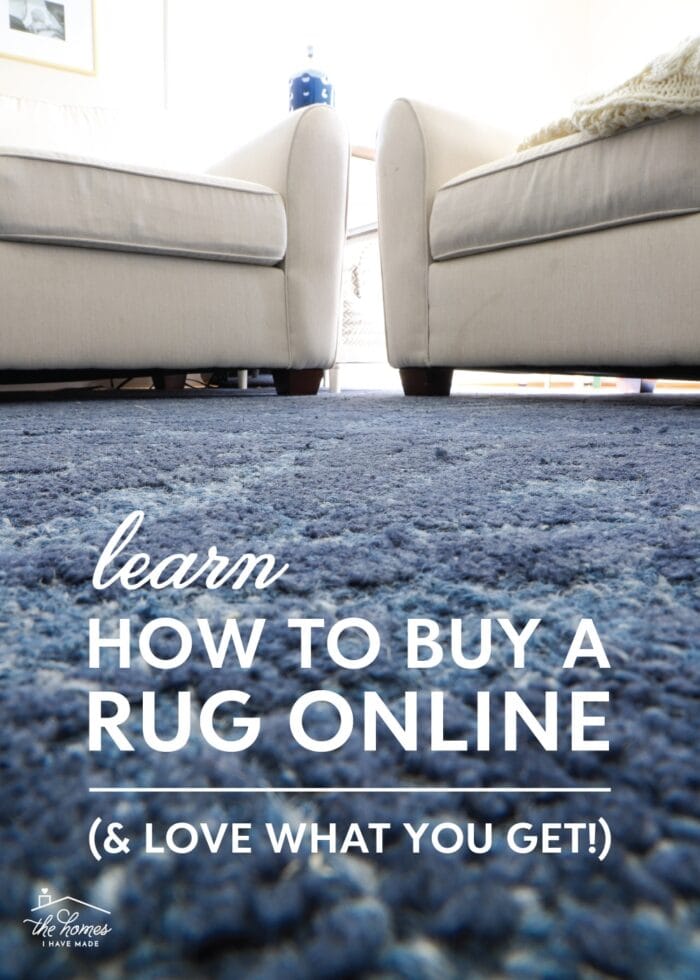
1 – Start With Size
When it comes to area rugs, size is (almost) everything; so it’s imperative that you measure your room to determine exactly what dimensions you need. This alone will help filter out a lot of rug “noise” and hone in on the real options for your particular space.
In general, you want to get the biggest rug your room can accommodate. And if you’re decorating an open concept space or multi-function room, you want (at a minimum) the front feet of all your furniture sitting on the rug. Resist the urge to go smaller just to save $100ish. Unless the rug is curving up the floorboards, you will likely never regret going big on a rug.
Unfortunately (or perhaps, fortunately depending on how you look at it) when you buy rugs online, the bigger you go, the less selection there is. But while you may not have as wide of a pattern or material selection, you will be much more likely to be satisfied with your choice in the end if the size is spot-on perfect.
2 – Understanding Rug Construction
Area rugs have their very own vocabulary; and it’s helpful to learn what the terms mean so that you can rely less on the online pictures (which can be deceiving) and better understand the written descriptions. If you’ve never purchased a rug or paid much attention to it, you may not know exactly what you want. But at least understanding these terms will give you a better sense for what will eventually be delivered.
When it comes to a rug’s construction, there are two main options:
Woven/Flat Weave
These rugs will appear…well…woven! As in, you can visibly see the various sections of fibers threaded over, under, and through each other in order to make the rug’s pattern. There isn’t usually a firm backing, making these rugs sometimes reversible since the same design is visible both on top of and underneath the rug.
While I love the look of woven rugs, I personally don’t love their durability (or lack there of) unless their pile is suuuuuuper flat (like on outdoor rugs). It’s easy for threads to “pull;” and since they are woven throughout the rug, you can’t just snip them. Additionally, I find stains and dirt difficult to get out of woven rugs because of all the grooves and crevices between the fibers.
Tufted (Machine or By Hand)
Tufted rugs are those that are stitched into a “backing” on the bottom of the rug. These rugs can either be looped (where the threads go back into the base of the rug creating a loop on the front side) or cut (where the threads are shorn off in a standard length), creating a uniform pile on the topside.
Tufted rugs can be created by hand or with machines.
- Hand tufting/knotting is done by artisans and typically seen on higher-end rugs made with natural materials such as wool and silk. These rugs will be incredibly durable and can last for generations.
- Machine-made tufting is used to produce more economically-priced rugs since they can be constructed faster and with cheaper materials.
3 – Understanding Rug Pile
Another helpful concept to understand when trying to buy rugs online is pile height, which refers to how “high” the rug sits off the ground and/or how “long” each of the rug fibers is. Pile applies to all types of rugs, no matter how they are constructed. Although some refer to pile as “thickness,” I think that terms is somewhat misleading because a rug’s thickness and heaviness is also influenced by what it’s made of.
For example:
- A high-pile rug made of thin, polyester fibers won’t feel thick or heavy. Rather it will feel fluffy and light. These types of rugs are typically know as shag rugs.
- A low-pile rug made of tight wool loops will feel thicker and heavier, even though it sits lower on the ground compared to higher pile rugs.
A “textured” rug will mean that particular areas of the rug will have different pile heights. Often times, a border or pattern will have a higher pile, creating a raised effect.
4 – Understanding Rug Material
Not all rugs are made of the same fibers; and what fibers you choose can significantly influence how it looks, feels, and wears.
Natural Fibers
These are rugs made of sisal, jute, or seagrass. They tend to be natural in color (beige or white), and can be rough and scratchy. They are incredibly durable and add a lot of lovely texture to a space, but they aren’t easily cleaned because foods and stains can get easily absorbed into all the fibers.
Cotton
Many flatweave and woven rugs will be cotton. Just like cotton clothes, these rugs are cozy and comfortable; but they are also lightweight (as in they can move around and flip up without a good rug pad) and are not stain-resistant. We’ve had good luck layering these rugs over wall-to-wall carpeting to provide an extra element of interesting home decor.
Wool
Most high quality rugs are made of pure wool. Although these rugs are on the pricier end of the spectrum and can shed a lot at first, you will not beat their durability, coziness, and clean-ability. We love them in high traffic areas or anywhere the kids are playing on the floor. Popular rugs such as those from Morocco, Turkey, and Persia are made of wool (and sometimes silk).
Polypropylene
These rugs are made of synthetic fibers. However, because these are man-made rather than natural fibers, they can sometimes have a plastic-y look and feel. That said, they will be water-resistant and stand up to a lot of messes and spills (which is why we put them under kitchen tables!)
5 – Read Reviews for Clues on Color
I don’t personally put much stock in reviews that talk about “durability,” “coziness,” and “quality,” because everyone has very different definitions for each of those words. I know what I consider “quality,” but it might not be the same as you.
But where reviews can come in handy when buy rugs online is in determining colors. It is notoriously difficult to accurately understand a rug’s color through a screen, especially when it comes to blues, reds, and whites. But text reviews from previous purchasers can help tremendously.
Descriptors like lighter, darker, smokier and even terms like “more navy, less blue” or “definitely ivory not white” can help you better understand what you’re seeing on the screen (and avoid serious disappointment at your doorstep).
6 – Find Where Price & Quality Converge
We have learned the hard way that you sometimes “get what you pay for” when trying to buy rugs online. I can’t tell you how many times I’ve seen an amazing price on a rug and I rush to order it thinking I’m getting an amazing deal. But then once the rug arrives, I realize why it was so inexpensive (most often, inexpensive rugs are low-pile, machine-made poly rugs).
There is no hard rule about how much a rug should or shouldn’t cost. Although you can find some great rugs for cheap, more often than not…if you want a high-quality, durable (wool) rug, you will be paying on the higher end of the spectrum.
So when you buy rugs online, you have to be the one to decide what quality you will be satisfied with for the amount you are willing to spend. If you don’t need a particularly durable rug for a certain space, you’ll find lots of great affordable options. But if you want a big, durable, high-quality rug, you may need to increase your budget.
7 – Gut Check the Visuals
Finally, once I think I’ve landed on a few rug options that will work based on all the above criteria (e.g., size, construction, material, and cost), I will do a few exercises in order to ensure the rug will look right in my space:
Look for (Similar) Real Life Images
Do a quick Google or Pinterest search to see if you can find real life rooms (or at least staged rooms) using the rug (or a similar one). For example, if you’re considering a black-and-white checked rug, plug that in the search box and see what kind of sample images you find. If you’re debating a red rug with your blue couch versus a white rug with your blue couch, images can help you decide. Even if the rug in the picture isn’t a perfect match, this exercise can at least help you rule out certain colors, patterns, and designs.
Make a Virtual Mockup
If a general search doesn’t increase or decrease your confidence on a particular rug, you can also do a virtual mockup. To do this, find online images of items you already have in the room (e.g., bed, couch, dressers, TV stand, etc). Then create a virtual room using the various rug options you’ve found during your search. By seeing a digital representation of your space, you will feel more confident making a final selection.
Learn more on how to do this: How To Make Design Boards on Canva
My Favorite Places to Buy Rugs Online
I don’t have certain retailers I always shop from. In fact, I’ll buy from pretty much anywhere if they have the exact rug I want at the price I’m willing to pay. That said, here are the online retailers I tend to visit regularly when looking for “the rug.”
Wayfair & Overstock
These stores tend to have a very similar (if not identical) selection. They carry a wide variety of rugs that span the spectrum on both quality and price. Best of all, they have free (and quick) shipping.
Rugs USA
This retailer also has a wide selection and runs really great promotions on a regular basis (helping you score even high quality rugs at affordable prices). That said, the selections sometimes feel a little generic.
Target
Target doesn’t carry a ton of unique options for area rugs, but they are my #1 go-to source for outdoor rugs (I love the Threshold brand). That said, they do regularly put rugs on sale. So even if you find a rug you love on another site, check here to see if it has a store-specific promotion first.
Amazon
Wading through the good rugs and the bad can take a lot of time. There are indeed great quality rugs to be found on Amazon, but scour those listings for important details on construction and material before you hit “Buy.”
Pottery Barn & Ballard Design
Both of these stores carry a really lovely selection of high-quality rugs that you won’t see at other retailers. That said, be prepared to pay a higher price point, and they do not offer free shipping (which can be jarring in this age of free shipping almost everywhere). However, I’ve learned both stores put rugs on sale regularly, so try waiting it out for the best price.
There are tons of advantages of buying rugs online (e.g., price, selection, delivery) but it can also be a little scary. Because despite how much research you do and how closely you read the descriptions, you’re never really exactly sure what you’re going to get. Using everything I outlined here, I was able to purchase 5 new rugs for our home…all of which I’m incredibly happy with. I’m going to share those rug finds with you next week. In the meantime, I hope the tips I break down here help you too shop for rugs online with a little more confidence!
Megan


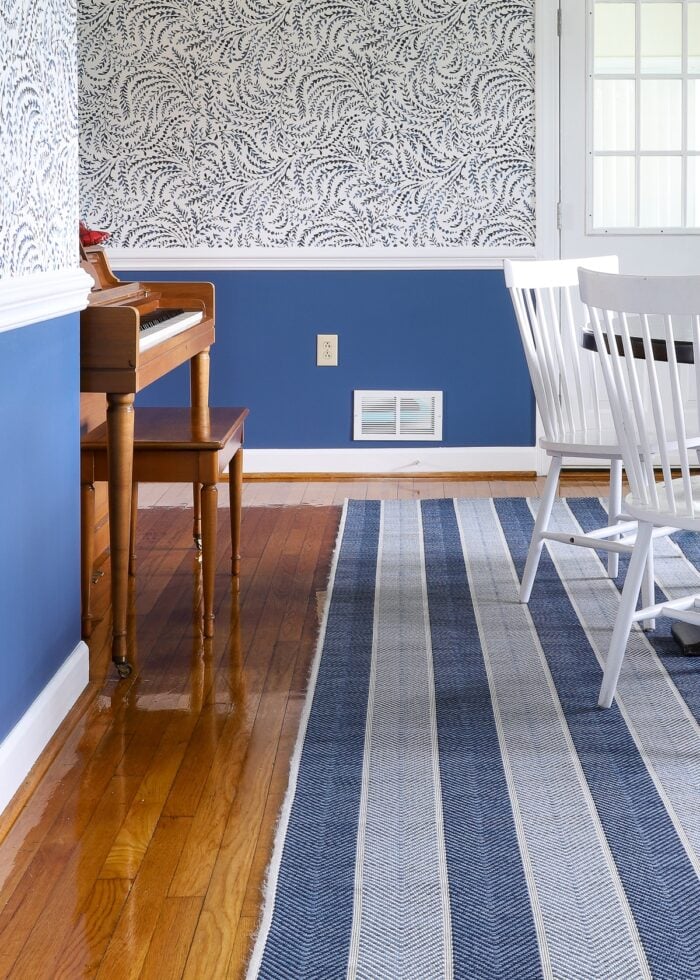
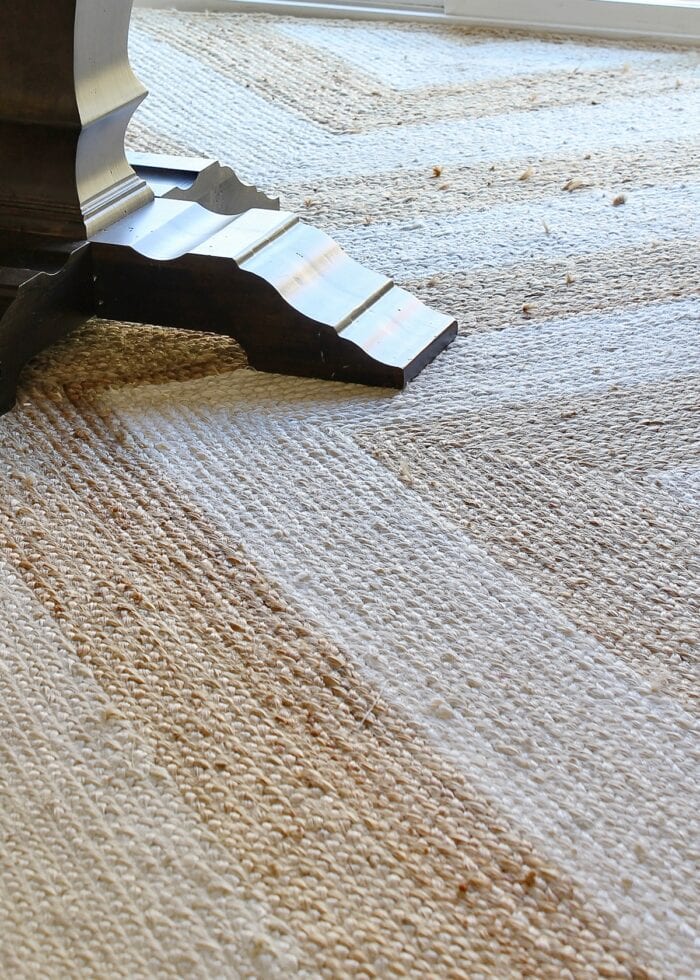
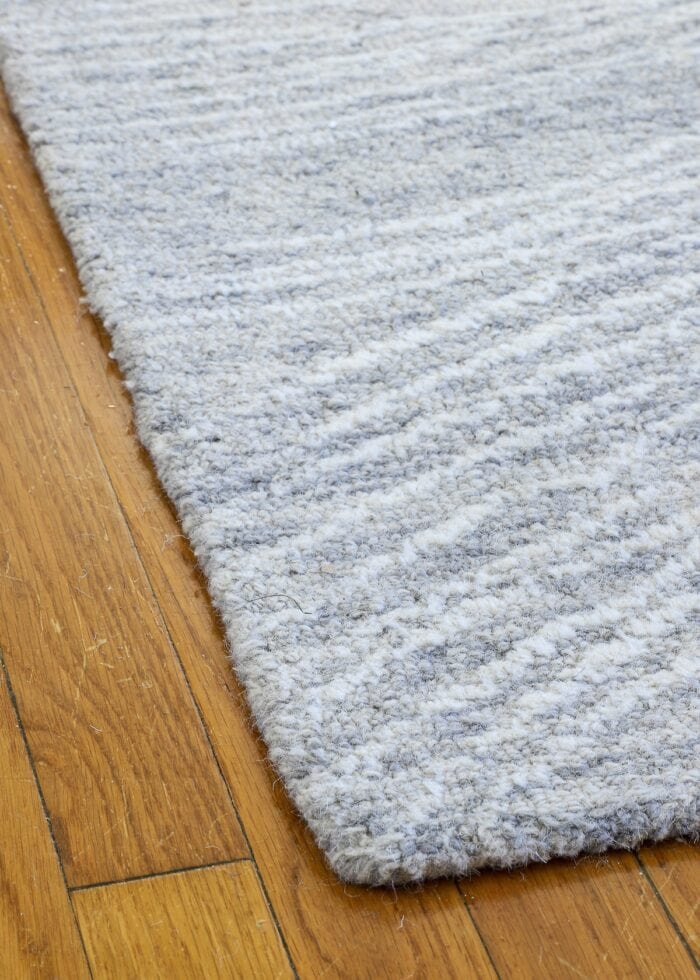
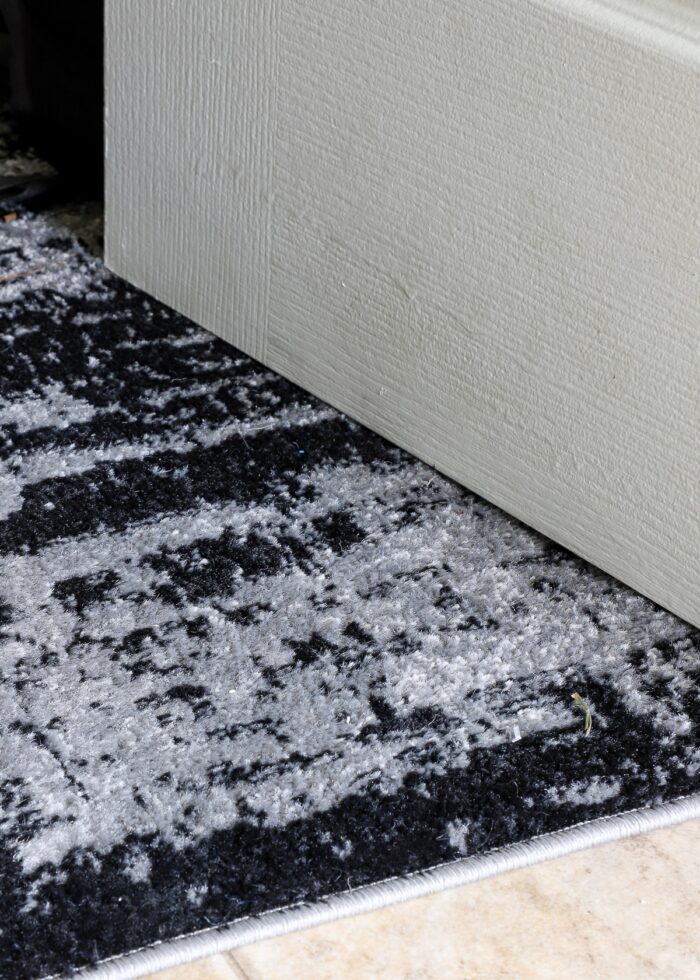
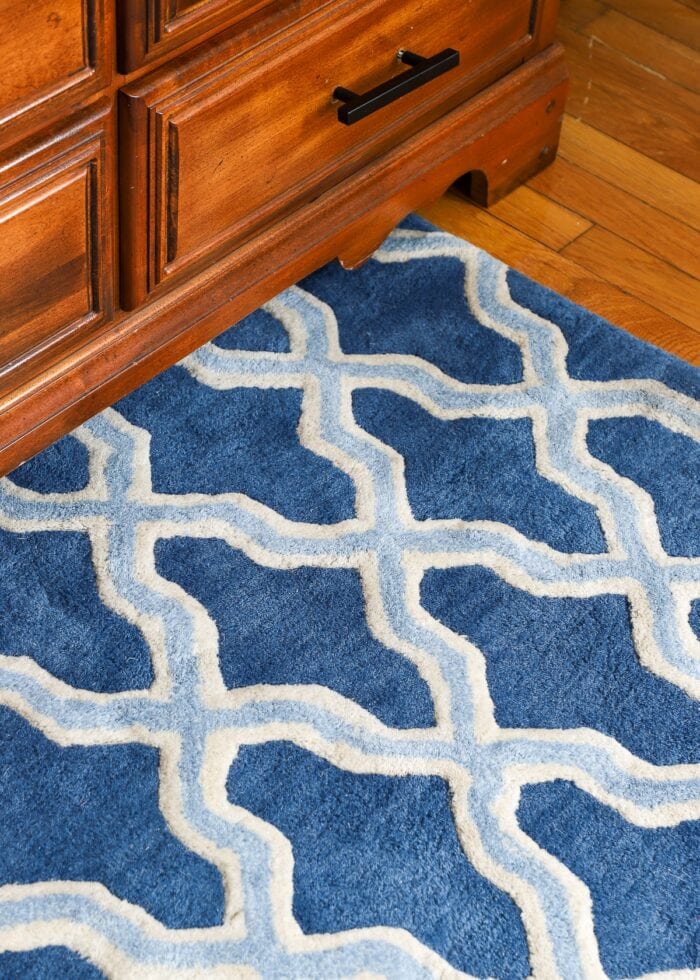
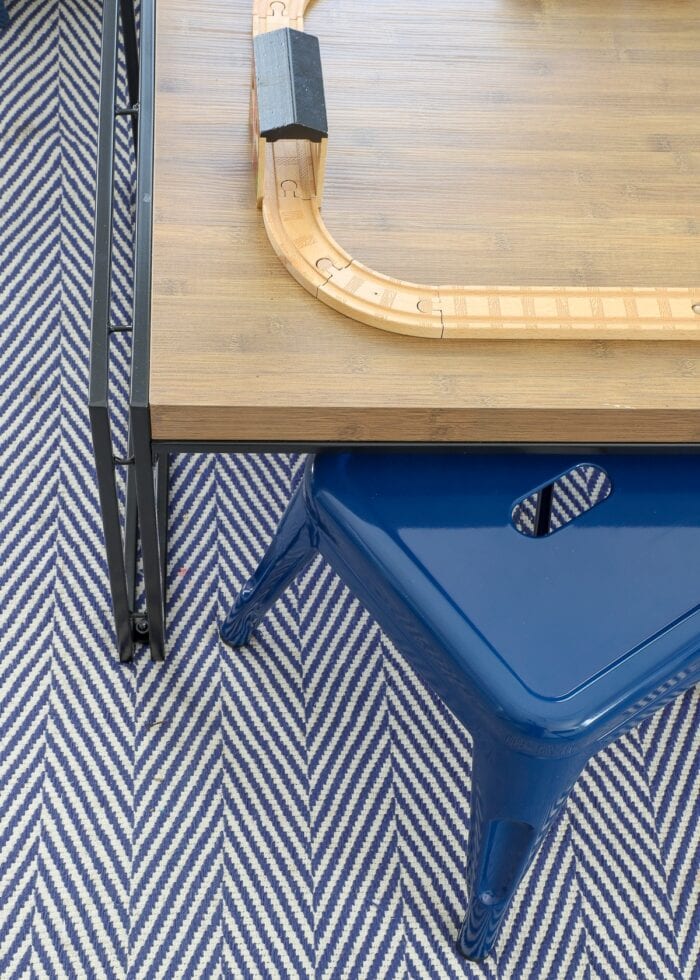
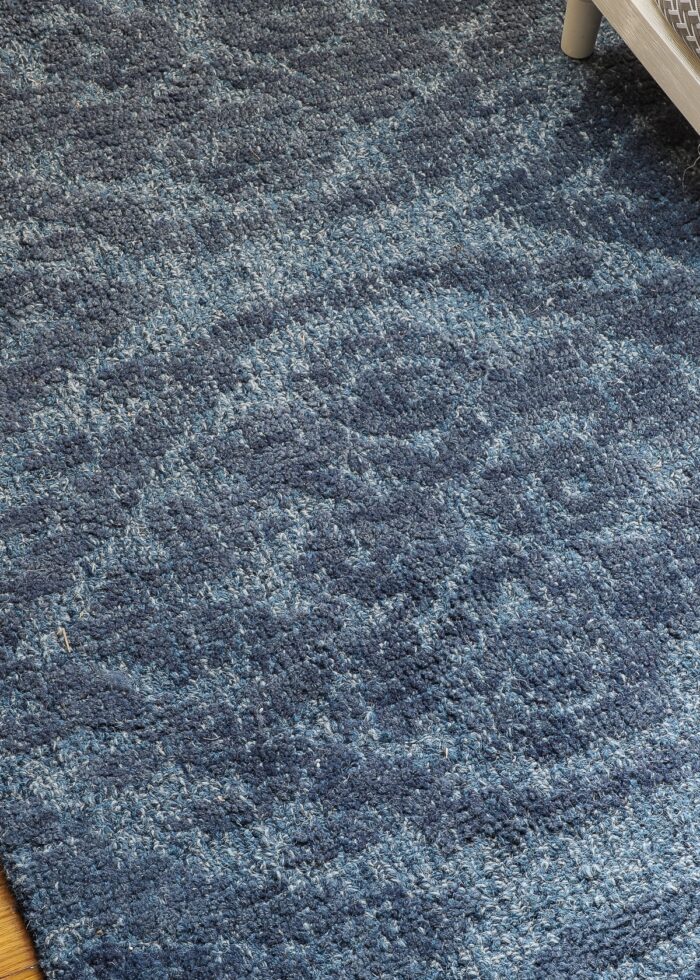
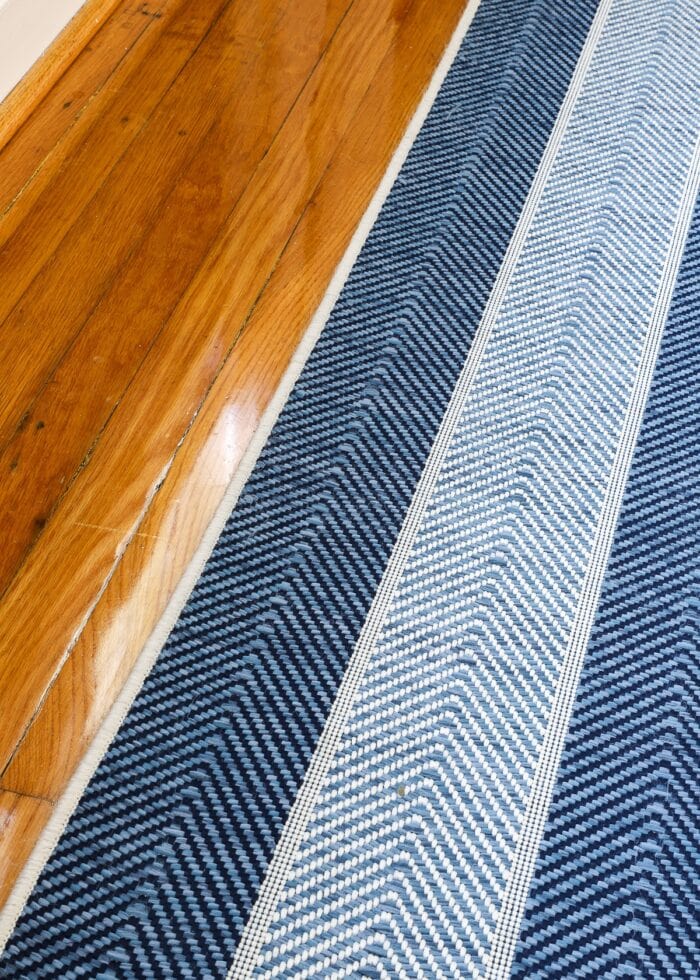
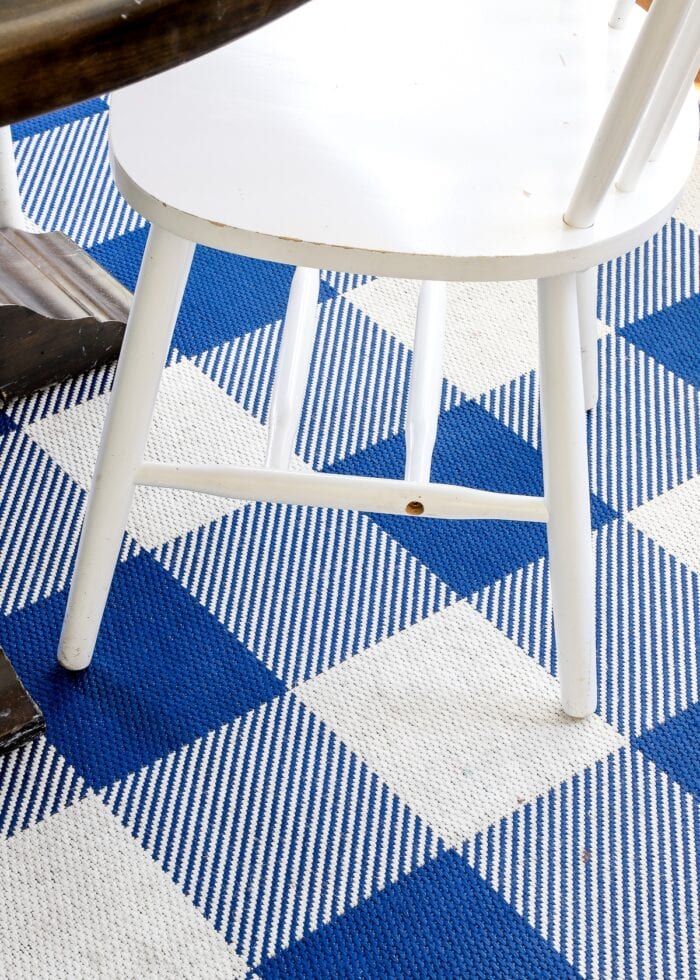
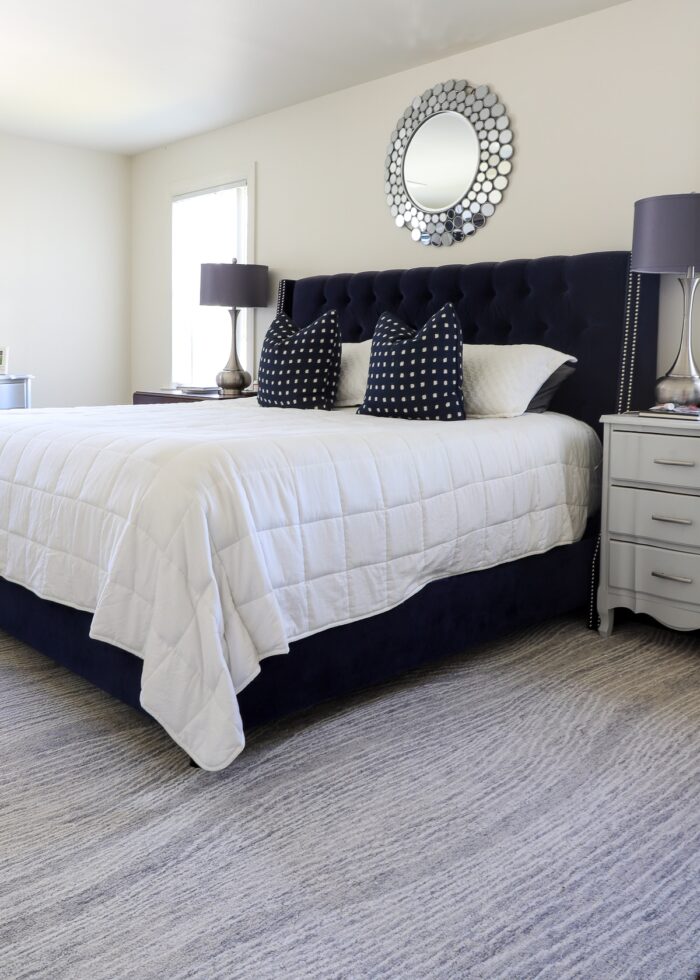
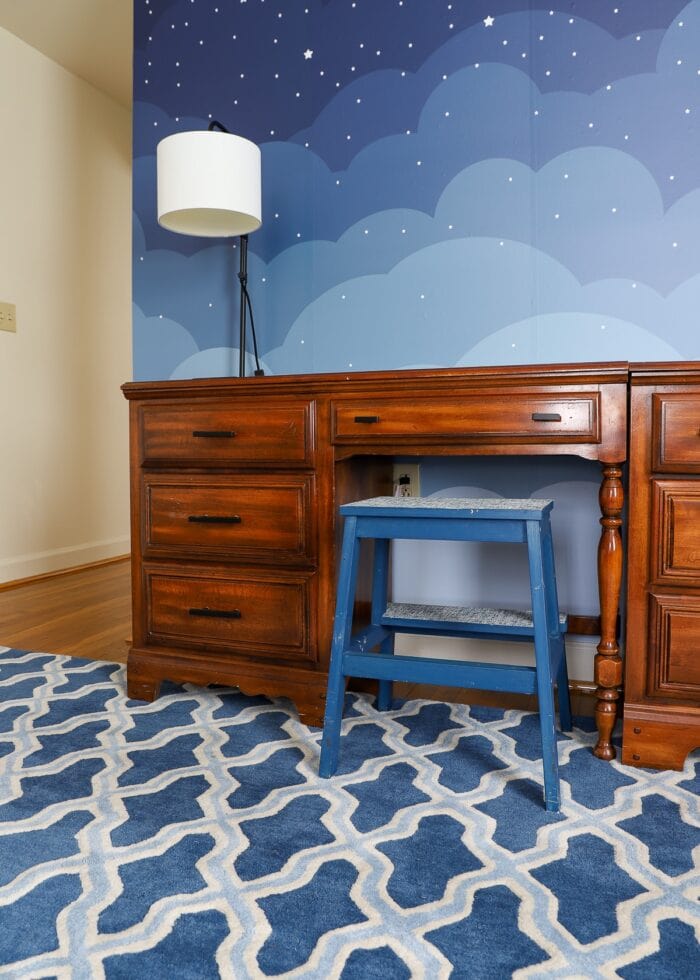
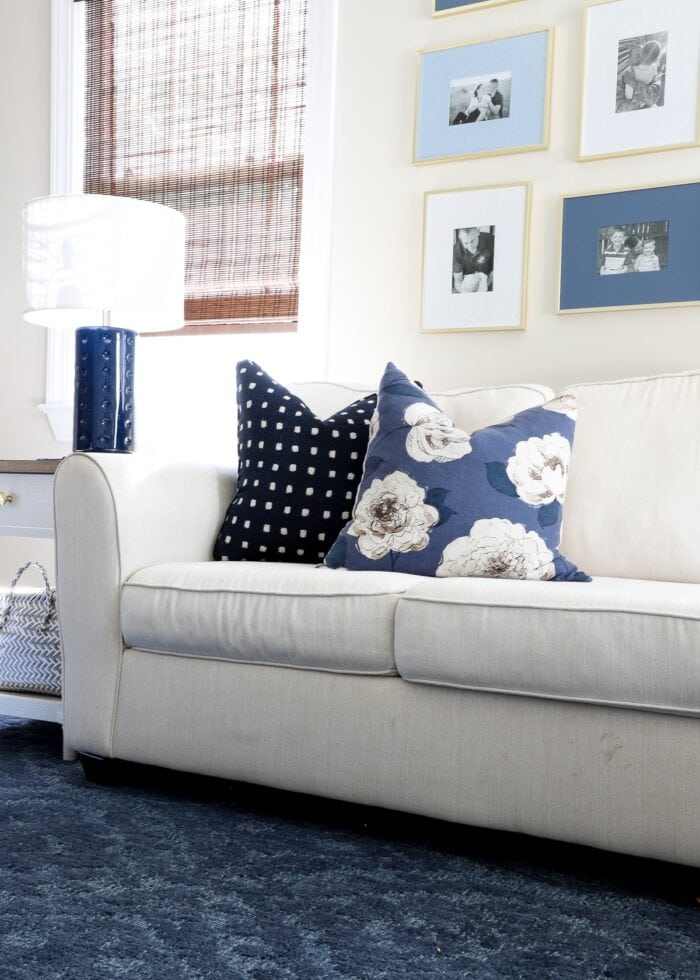
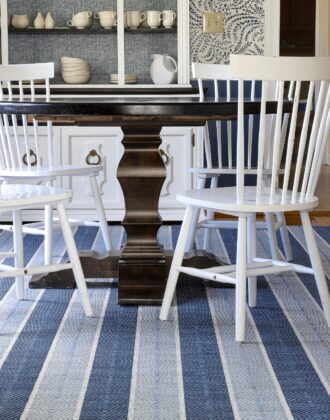
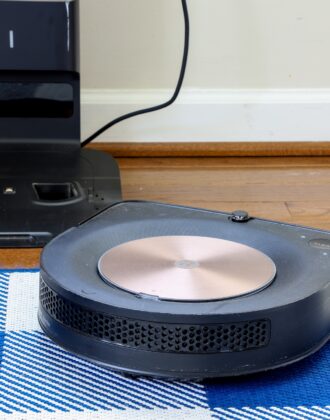
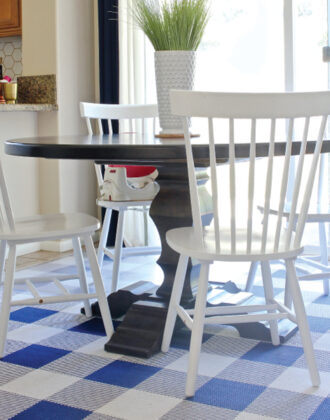
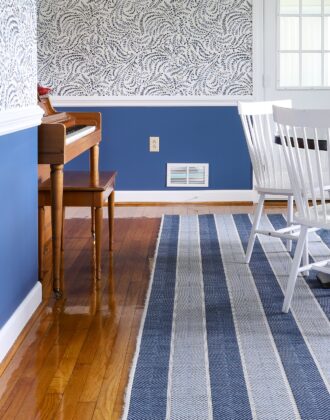

3 Comments on “How to Buy a Rug Online (That You’ll Actually Love Once It Arrives)”
Thanks, Megan. Really helpful information. I feel a little more confident in searching for two 8×10 rugs.
Someday I will have to buy a rug. At the rate we are going, I will have to save this gem, and refer back to it. The idea of even shopping for a rug is way overwhelming. Lets be real, even shopping for a couch is overwhelming. Thank you for sharing all your tips. It gives me something to refer back to.
Generally can rugs be returned if they’re not to your liking?